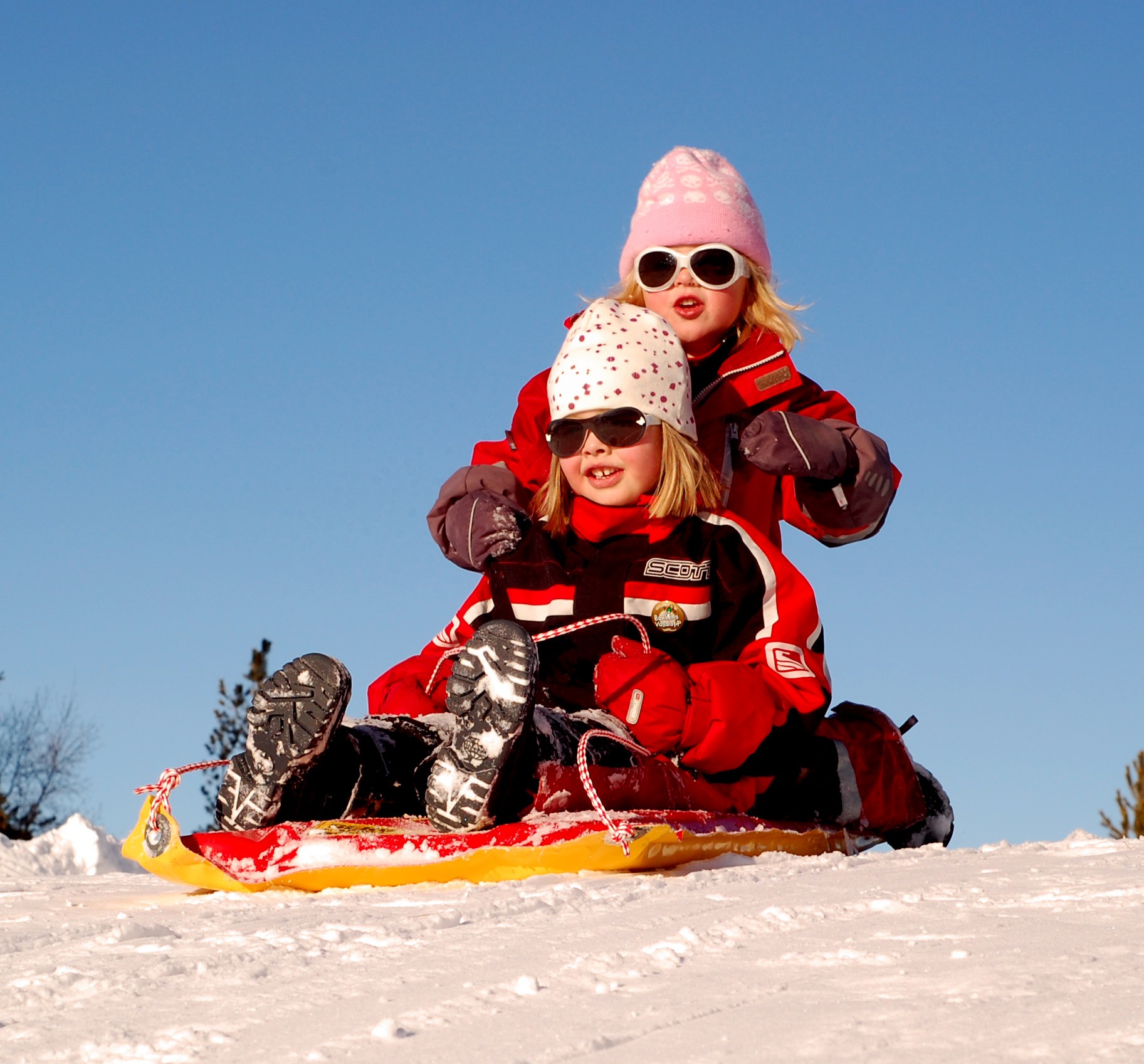Return to News & Updates

Fun in the Snow/Sledding Safety

Often times an afternoon of fun in the snow can lead to careless injuries. By taking the right safety steps, these injuries can be prevented. In particular, sledding causes a high percentage of snow play injuries. REMSA and Care Flight would like to offer some safety tips to keep playing in the snow safe.
Tips for Playing in the Snow:
- Check the weather report and heed precautions and advisories. If weather warnings suggest a severe wind chill or extremely low temperatures, consider avoiding outdoor activities until the weather improves.
- Be aware of avalanche warnings.
- Be aware of symptoms and treatment for hypothermia, snow blindness and frostbite.
- Practice sun safety, even when it is cold out.
- Remember first aid tips including a first aid supplies.
- Dress in layers. It is very important to keep warm and dry while enjoying outdoor activities in the winter.
- When not wearing a helmet, wear a hat, and a neck guard. Keep ears covered too. Noses can be covered with neck guard.
- Make sure that your clothes are comfortable. Tight clothing restricts circulation and can increase chances of frostbite.
- Wear brightly colored clothing to be seen easier.
- Take extra care at dusk because of reduced visibility.
- Goggles that provide sun safety can also protect eyes from cold, wind and snow.
- Remove all drawstrings from children’s snowsuits and avoid use of scarves to reduce the risk of strangulation.
- Don’t overdo activities.
- Try to maintain healthy eating habits including mealtime breaks, consuming plenty of water and having snacks available.
- Avoid alcohol, tobacco, drugs and consider reducing caffeine consumption.
- Take some time to relax and give children some down time as well.
- Have children (and adults) where helmets designed for the activity if it involves a risk of head injury or required by law.
- Teach children never to touch metal during cold temperatures.
- Children should be taught never to throw snow at other people. Snowballs can contain ice chunks or stones that can cause harm including damage to eyes.
- Never bury anyone in snow as there is a risk of suffocation and teach children never to make tunnels in the snow.
- Don’t let children eat snow. Even white snow can contain pollutants from the air, including trace minerals like mercury. Snow can also contain windblown soils that can include animal fecal matter.
- Teach children to never venture onto ice, ponds or lakes without an adult first checking the ice.
- Children should never play on snow piles near parking lots or on the roadside. Make sure children never go near snowplows or areas being plowed.
Sledding Safety Tips:
- Always sled in familiar territory.
- Go with a companion.
- Check out the terrain before you sled. Walk up and down the hill to check for rocks or debris or other obstructions.
- Do not sled where there is a drop off, road or stream at the bottom of a hill.
- Make sure you sled a safe distance away from any trees or other potential hazards.
- Let others know when you intend to go sledding so they know your whereabouts and give them an expected time of return.
- Look for posted signs which may indicate whether or not sledding is recommended in an area.
- Wear proper attire. Dress in layers. Wear goggles and gloves and wear a ski mask if possible to protect from wind burn.
- Do not sled when the weather reports warn against wind chill; sledding creates additional wind which can result in frostbite.
- On very steep hills, start your initial sledding further down the hill to allow yourself time to get to know the terrain.
- Do not overcrowd a sled.
- Avoid sledding in a prone stomach position. It is much safer to sled sitting up or lying on your back. Do not sled down a hill head first.
- Do not sled while standing or kneeling.
- Purchase high quality sledding products for long lasting durability.
Tips for parents to follow when their children go sledding:
- Select your child’s downhill vehicle carefully
- Sleds without a steering mechanism are the most dangerous since the rider has no way of avoiding objects in his or her path.
- Consider a metal runner sled over a plastic sled. Runner sleds elevate the rider off the ground and away from small, stationary objects. A plastic sled, by nature of its design, will strike anything in its path.
- Always inspect the terrain of the hill before allowing your child to use it
- The terrain should be smooth. A bumpy terrain may throw the rider into the air or off the sled, causing the child to land on the ground or in the path of another speeding sled.
- Avoid hills with trees, telephone poles, large rocks or fences on the slope or at the base of the slope. Hills should be wide and free of obstructions.
- Avoid hills whose slope ends at a road or area with motor vehicle traffic.
- Avoid sledding on icy surfaces. A slick surface increases the speed of the sled while further reducing the rider’s control.
- Encourage young children to sled feet first
- This is the best way to protect your child from crashing or being thrown head first at 10-20 mph.
- Dress your child appropriately
- Children should wear insulated, waterproof boots and gloves and well-padded clothing. Protective helmets are a must, especially for younger children.
- Supervise your children and talk with them about sledding safety
- Children who understand the risks are more likely to exercise good judgment when sledding, and less likely to be reckless.
